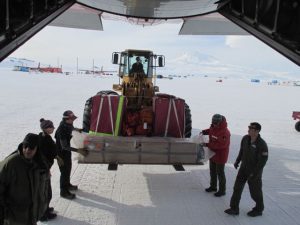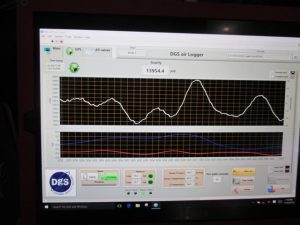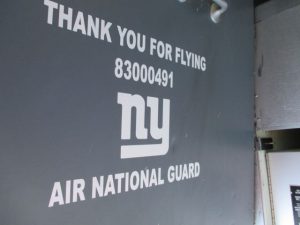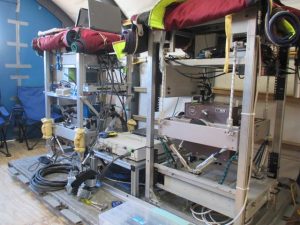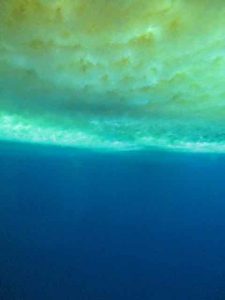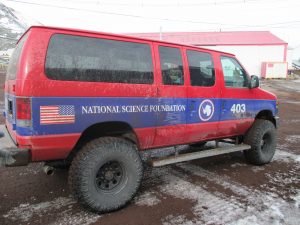We return to the ocean the next day with better weather

The crew flies over our proposed site, descends to 300 feet and then climbs back to 2500 feet to check the wind speed and direction. While we turn around to return to the drop site, the cargo deck crew prepares the ALAMO float.

We scientists are seated along the sides (with our seatbelts fastened) and the loadmasters don harnesses and tether themselves to anchor points on the cargo deck. It’s time to open the cargo door!

When the navigator tells the loadmaster that we are at the proper location, they launch the ALAMO, its parachute deploys, and it drifts out of sight quickly, before we can see if it landed in the water.
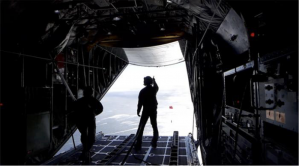
Everyone wants to know that the ALAMO landed safely in the water, so Major Hicks circles back several times while we search the surface of the ocean for the orange parachute. We never saw any sign of it.
When we land, Kirsty comes on board with a smile on her face and says that the ALAMO float has already sent us an email to say that it has successfully made its first measurements!

